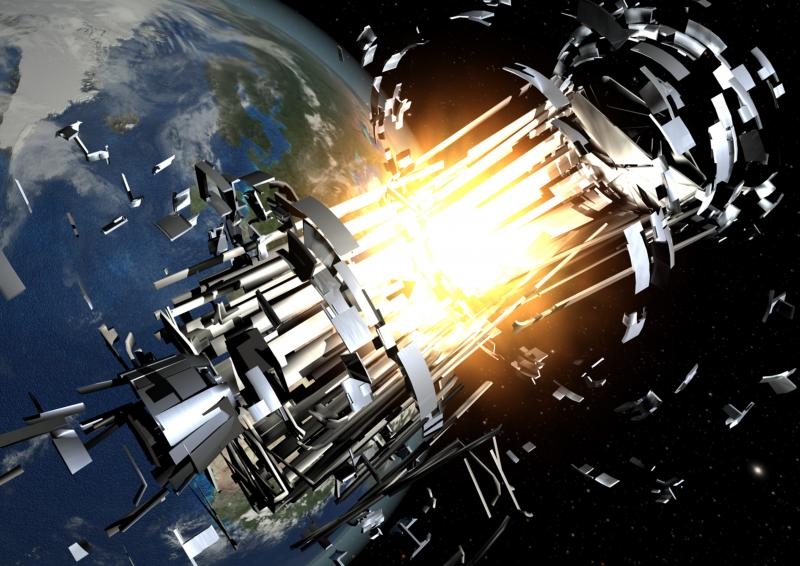Prevention
As there is no solution for getting rid of debris already created, the main players in the Space sector have begun to take preventive measures in an attempt to reduce the amount of debris produced: these measures, for example, consist in placing geostationary satellites in a “graveyard” orbit at the end of their operational life, in order to free up space in the useful orbit, or to ensure that launcher stages are rendered inert after they enter orbit, to prevent all subsequent risk of explosion. These measures are described in documents such as the European Code of Conduct for space debris mitigation, developed by ASI, UKSA, DLR, CNES and ESA.
These measures nonetheless represent a significant extra cost: one can, for example, mention limiting the orbital life of launcher stages, which could entail de-optimising the injection trajectory and thus reducing the in-orbit payload. Similarly, the need to de-orbit or raise the orbit of end-of-life satellites entails a reduction in their lifetime, because of the additional consumption of propellant and the need to install additional systems, the cost of which can be very high.
As space activity is increasingly developing in a context of economic competition, in particular with the appearance of new players (new countries, private operators, etc.) the same rules must be applied by everyone. These rules must be the subject of an international consensus. To achieve this, the main Agencies have set up a coordinating structure called the IADC (Inter-Agency Space Debris Coordination Committee). This committee was created in 1993 following an American initiative and today comprises the twelve leading space Agencies, including CNES since 1996. In October 2002, the IADC published the “IADC Space Debris Mitigation Guidelines” which describe the measures to be applied in space to mitigate the proliferation of debris.

Figure 1
GEO corridor and protected LEO and GEO zones
As space activity is increasingly developing in a context of economic competition, in particular with the appearance of new players (new countries, private operators, etc.) the same rules must be applied by everyone. These rules must be the subject of an international consensus. To achieve this, the main Agencies have set up a coordinating structure called the IADC (Inter-Agency Space Debris Coordination Committee). This committee was created in 1993 following an American initiative and today comprises the twelve leading space Agencies, including CNES since 1996. In October 2002, the IADC published the « IADC Space Debris Mitigation Guidelines » which describe the measures to be applied in space to mitigate the proliferation of debris.
At country level, the subject is discussed at the United Nations by the Committee on the Peaceful Uses of Outer Space (COPUOS): the Member States have agreed to a number of high-level principles, based on the IADC recommendations, which were ratified by the General Assembly of the United Nations in December 2007. The States are urged to introduce these main principles into their national legislation so that they become applicable to all their manufacturers and operators. This is the case in France: the Space Operations Act was passed in June 2008. This Act, which determines clear and fair rules, provides legal safeguards for all the players in the Space sector, both public and private. The associated technical regulations contain space debris requirements in accordance with the UN and IADC recommendations.

Figure 2
Explosion of a launcher stage in Orbit (artist’s impression)
(Crédits ESA)